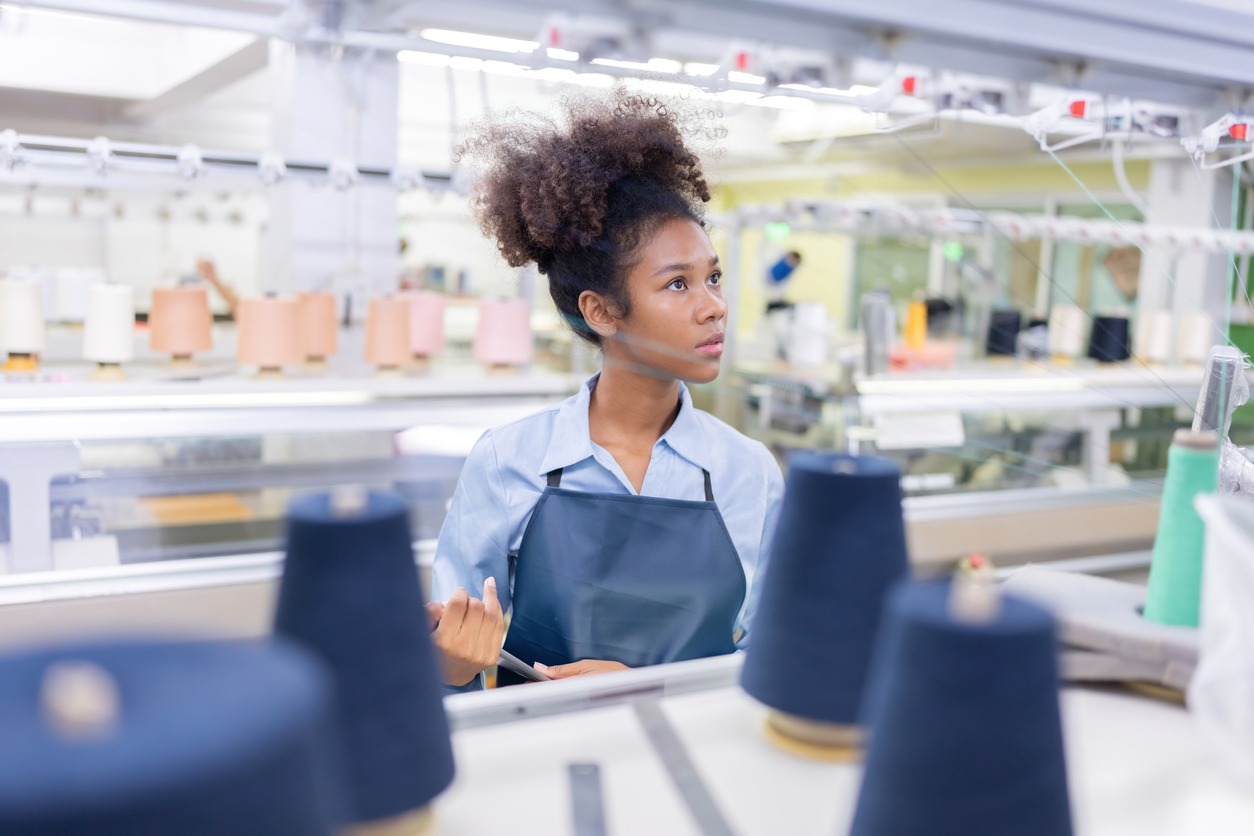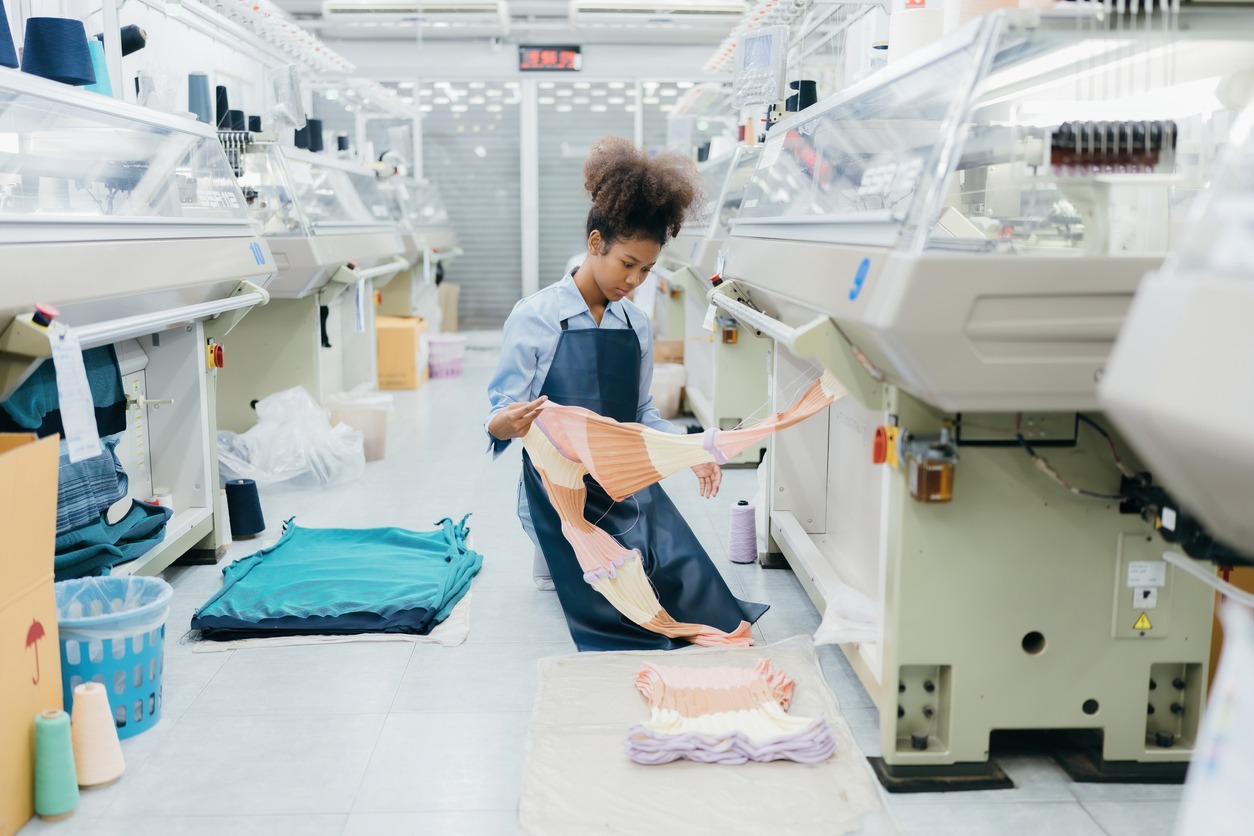In the vibrant and ever-evolving world of fashion, the production of clothing stands as a cornerstone, shaping trends, economies, and lifestyles. At the heart of this industry’s transformation in recent years is the advent and integration of automation technologies. This article delves into the multifaceted role of automation in clothing production, exploring how it has revolutionized processes, reshaped economies, and redefined industry standards.
Historical Context of Automation in Clothing Production
Early Stages of Industrialization in Clothing Production
The roots of automation in clothing production trace back to the Industrial Revolution in the late 18th and early 19th centuries. This period marked a pivotal shift from handcrafting to mechanized production. The invention of the spinning jenny, water frame, and power loom revolutionized the textile industry, significantly increasing production capacity. These innovations not only accelerated fabric production but also set a precedent for mechanization in garment manufacturing.
Evolution from Manual to Semi-Automated Processes
As the 20th century progressed, the clothing industry witnessed gradual enhancements in production techniques. The introduction of electrically powered sewing machines in the early 1900s allowed for faster and more consistent stitching, paving the way for more sophisticated automation. Mid-century advancements included the development of automated cutting tables and pattern making technologies, which further streamlined the production process. These changes represented a shift from purely manual labor to a combination of human and machine-assisted production, setting the stage for full automation.
Key Historical Milestones
Several key milestones stand out in the history of automation in clothing production. In 1965, the first computer-controlled cutting machine was introduced, which could accurately cut large layers of fabric faster than manual methods. The late 20th century saw the emergence of Computer-Aided Design (CAD) and Computer-Aided Manufacturing (CAM) systems, which revolutionized pattern design and production planning. These technologies allowed for rapid prototyping, reduced waste, and greater design flexibility, marking a significant leap in clothing production efficiency and creativity.
Current State of Automation in Clothing Production
Overview of Current Technologies
Today’s clothing production landscape is dominated by advanced technologies like CAD, robotics, and Artificial Intelligence (AI). CAD systems enable designers to create intricate patterns and designs with high precision. Robotics has been integrated into various stages of production, from sewing to fabric handling, drastically reducing the need for manual labor. AI is playing an increasingly significant role in predicting fashion trends, optimizing supply chains, and customizing designs to consumer preferences.
Case Studies of Modern Automated Factories
Modern automated factories serve as testament to the power of these technologies. For example, Adidas’ “Speedfactory” uses automated knitting technology and robotics to produce shoes rapidly, demonstrating a significant reduction in production time. Similarly, Zara’s highly automated factories utilize advanced robotics and just-in-time manufacturing principles to quickly respond to fast-changing fashion trends.
Impact of Automation on Production Speed and Efficiency
The integration of these technologies has led to remarkable improvements in production speed and efficiency. Automated systems can operate continuously without fatigue, leading to higher output rates. The precision of automation also minimizes material waste and optimizes resource use, leading to more efficient production processes. Find out more about New York’s Clothing Industry. Visit Decoding Michael Kors Between Luxury and Accessibility in Fashion
Benefits of Automation in Clothing Production
Increased Production Speed and Efficiency
One of the most significant benefits of automation is the substantial increase in production speed. Automated machinery can work at a consistent pace without breaks, allowing for around-the-clock production. This increase in efficiency enables manufacturers to meet the growing demand for clothing more quickly and effectively.
Enhanced Precision and Consistency in Product Quality
Automation also ensures a higher degree of precision and consistency in clothing production. Automated machines are programmed for exact specifications, reducing the likelihood of human error and ensuring consistent product quality. This precision is particularly crucial in large-scale production where consistency across thousands of items is essential.
Reduction in Labor Costs and Human Error
The reduction in reliance on manual labor is another significant benefit. Automated processes reduce the labor-intensive nature of clothing production, leading to lower labor costs. Moreover, automation minimizes human errors, which can lead to defects or inconsistencies in the final product.
Environmental Benefits through More Sustainable Practices
Finally, automation contributes to more sustainable practices in the clothing industry. It allows for more precise material usage, reducing waste. Automated systems also enable more efficient energy use and can help in implementing environmentally friendly production practices, such as using recycled materials more effectively.
These developments in automation not only highlight the technological advancements in clothing production but also underscore a shift towards more efficient, consistent, and sustainable manufacturing practices.
Challenges and Considerations
The Cost of Implementing Automation
One of the primary challenges in adopting automation is the significant initial investment required. Advanced machinery, like robotic sewing systems or AI-driven design tools, entails high acquisition and installation costs. Additionally, there are ongoing expenses related to maintenance, upgrades, and training. Small and medium-sized enterprises (SMEs) in the clothing industry often find these costs prohibitive, which can widen the gap between large corporations and smaller businesses.
Job Displacement and Changing Skill Requirements
Automation in clothing production also raises concerns about job displacement. As machines replace tasks traditionally performed by humans, there is a potential for significant workforce reductions. Moreover, the skillset required in an automated environment shifts from manual labor to more technical and analytical skills, necessitating extensive retraining and education programs. This transition poses challenges in terms of workforce restructuring and the development of new training and education paradigms.
Balancing Automation with Artisanal Craftsmanship
Another consideration is the balance between automation and artisanal craftsmanship. In the fashion industry, especially in luxury and bespoke segments, the value of handcrafted items holds significant cultural and economic importance. Automation must be integrated in a way that complements rather than diminishes these artisanal skills, preserving the heritage and unique qualities of handcrafted clothing.
Ethical Considerations and Worker Welfare
The ethical implications of automation are far-reaching. It raises questions about worker welfare, especially in regions where clothing production is a major source of employment. Ensuring that workers displaced by automation have access to alternative employment opportunities, retraining programs, and fair compensation is crucial. Additionally, ethical automation practices should ensure that the increased efficiency and profitability do not come at the expense of labor rights and working conditions.
The Impact of Automation on the Global Market
Shifts in Global Production Hubs
Automation is reshaping the global landscape of clothing production. Countries with high labor costs are finding it increasingly feasible to bring manufacturing back from overseas due to reduced dependence on manual labor. This shift could lead to a more localized or regionalized production model, impacting traditional production hubs in countries with lower labor costs.
Competitive Advantage for Countries and Companies Adopting Automation
Countries and companies that embrace automation are gaining a significant competitive edge. Automated production allows for faster turnaround times, greater flexibility in responding to market trends, and enhanced product quality. These advantages enable companies to better meet consumer demands and adapt to fast-changing fashion trends, thus securing a stronger position in the global market.
Effects on International Trade and Economy
The widespread adoption of automation in clothing production has far-reaching effects on international trade and economies. It could lead to a reduction in outsourcing, impacting economies that rely heavily on textile exports. However, it also opens up new markets and opportunities for innovative products and production methods, potentially leading to a more diversified and resilient global economy.
Future Trends and Predictions
Emerging Technologies in Automation
The future of clothing production is poised to be shaped by emerging technologies such as advanced AI, 3D printing, and smart textiles. AI is expected to play a crucial role in predictive analytics for fashion trends, supply chain optimization, and personalized customer experiences. 3D printing offers the potential for on-demand production and greater customization, reducing waste and inventory costs. Smart textiles are opening new frontiers in functionality and interactivity of clothing.
Predictions for the Future Landscape of Clothing Production
As these technologies mature, we can expect a more agile, responsive, and sustainable clothing production industry. Customization and personalization will likely become the norm, with consumers playing a more active role in the design and production process. Sustainability will become increasingly important, with a focus on reducing waste and promoting circular fashion.
The Role of Innovation and Research
Continuous innovation and research are crucial for advancing these technologies and overcoming current limitations. Collaboration between tech companies, fashion brands, and academic institutions will be key in driving these advancements and ensuring they are accessible and sustainable.
Case Study: Automation Success Stories in Clothing Production
Examples of Companies Successfully Implementing Automation
Several companies have emerged as leaders in integrating automation into clothing production. For instance, Adidas’ Speedfactory and Nike’s use of automated knitting technology for shoe manufacturing have set benchmarks in the industry. These companies have successfully utilized automation to reduce production times, increase customization, and bring manufacturing closer to their main markets.
Analysis of Their Strategies and Outcomes
The success of these companies can be attributed to their strategic approach to automation. They have focused not just on technology adoption but also on the integration of these technologies into their broader business models and supply chains. The outcomes have been significant: reduced lead times, increased product customization, and a stronger ability to respond to market trends quickly. These case studies demonstrate the potential of automation to transform clothing production, not only in terms of efficiency but also in fostering innovation and competitiveness in the global market.
Conclusion
The exploration into the role of automation in clothing production reveals a landscape that is rapidly evolving, driven by technological advancements and changing market dynamics. Automation, with its myriad forms from robotics to AI, is not just a futuristic concept but a present reality reshaping the fashion industry.
The shift from manual to automated processes marks a significant milestone in clothing production, echoing the broader trends of innovation and efficiency seen across industries. While the benefits of automation – increased speed, efficiency, precision, and sustainability – are clear and impactful, they do not come without challenges. The cost of implementation, the displacement of jobs, the need to balance technology with artisanal craftsmanship, and the ethical considerations surrounding worker welfare are issues that require thoughtful and proactive management.
As we look at the global market, the impact of automation is profound. It is redrawing the traditional boundaries of production hubs, giving a competitive edge to those who embrace these technologies, and altering the fabric of international trade and economic structures. The future of clothing production is poised to be more localized, personalized, and responsive to the end consumer, powered by the ongoing advancements in AI, 3D printing, and smart textiles.
Innovation and research will continue to be the bedrock of this evolution. The collaboration between technology developers, fashion brands, and educational institutions will be crucial in pushing the boundaries of what’s possible in clothing production. As we have seen from the success stories of companies like Adidas and Nike, the strategic integration of automation into business models can lead to remarkable outcomes – faster production, greater customization, and a stronger market presence.
In conclusion, the role of automation in clothing production is a testament to human ingenuity and adaptability. As the industry moves forward, it faces the dual task of embracing the efficiencies and opportunities presented by technology, while also addressing the socio-economic and ethical implications that come with such transformative changes. The journey of automation in clothing production is not just about machines and software; it’s about shaping a future that is efficient, sustainable, and inclusive, holding true to the essence of what fashion is about – expression, creativity, and connection.




